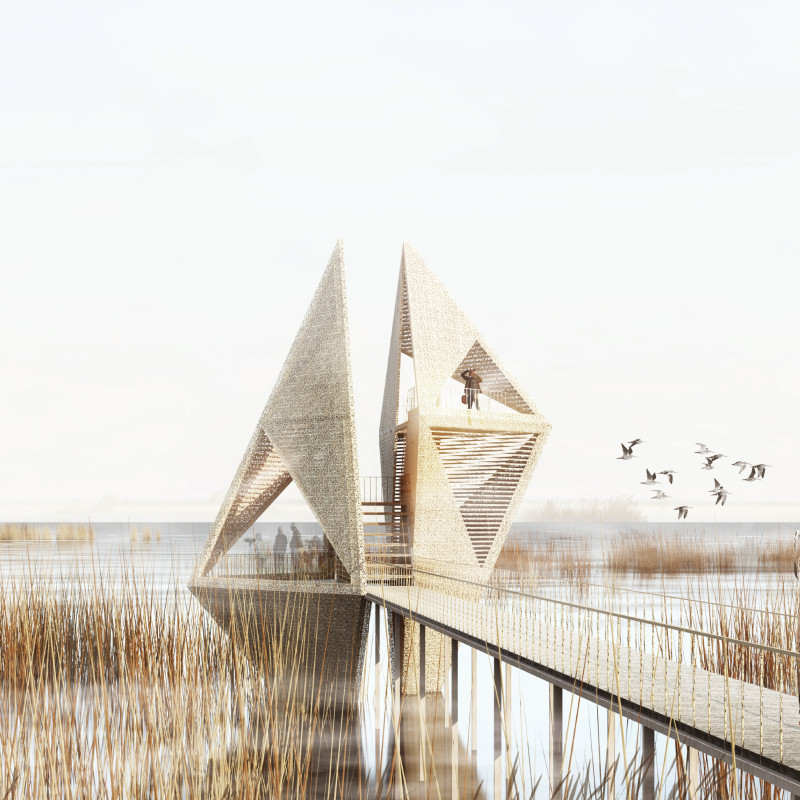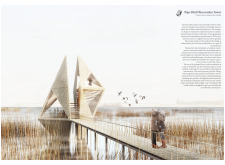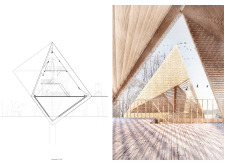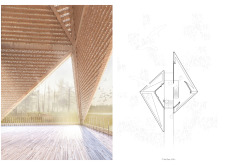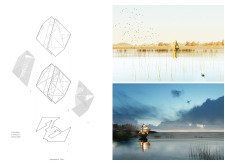5 key facts about this project
## Overview
The Pape Bird Observation Tower is situated in Latvia, strategically positioned to enhance bird-watching experiences while establishing a strong connection to the adjacent wetland ecosystem. The intent of the design is to create an engaging space that fosters ecological sensitivity and community involvement through its architectural form and function.
### Spatial Configuration
The internal layout of the observation tower features multiple viewing platforms and terraces, allowing visitors to engage in a variety of activities from casual observation to structured educational programs. This three-dimensional arrangement promotes social interaction among visitors and provides an inclusive experience. Open spaces within the design effectively merge interior and exterior environments, encouraging interaction with the surrounding natural landscape.
### Materiality and Sustainability
The material selection for the tower prioritizes environmental compatibility and aesthetic alignment with the wetland context.
- **Wood Structure:** The primary construction material is robust timber, chosen for its lightweight properties and ability to create a warm aesthetic, establishing a connection to the natural environment.
- **Phragmites australis:** Native reeds are utilized for roofing, integrating the structure with the local ecosystem while enhancing insulation and camouflage.
- **Glass Elements:** Transparent sections are incorporated to maintain visual connections with the surrounding landscape and facilitate natural light infiltration.
- **Steel Components:** Employed for structural support, the steel elements ensure stability while maintaining a delicate architectural profile.
The design emphasizes low-impact construction methods and utilizes sustainable materials to minimize ecological disruption, while the tiered platforms enhance the visitor experience by offering varied perspectives for wildlife observation.


